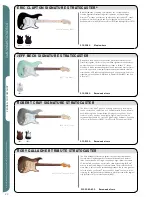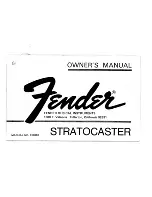
12
ULTRABASS
BASS GUITAR PACK
Rhythm exercise 1:
This exercise combines the various note values in the course of eight 4/4 measures. To begin with, try playing each bar individually
at a slow tempo ideally with the aid of a metronome. Sometimes it helps to count the quarter beats out loud or tap them with your
foot while you play. Once you have mastered each of the measures individually, you can try joining them together. When you get to
the end of the 8th bar, its best to start again from the beginning. Once you feel confident playing this exercise, try gradually
increasing the tempo. In the following exercises all the notes are played on the open A string. You can, of course, practice on each
of the other strings, too.
Triplets
If a note is divided not into two parts equal in time value (e.g. a quarter note into two eighth notes) but into three, the result is what
is known as a
triplet
. This is indicated in standard notation or in tablature by the addition of a 3 above or below each group.
If a whole note is divided not into two but into three half notes, the result is what is known as a
half triplet
. A 4/4 measure would
therefore contain a half triplet (or three separate half notes):
If a half note is divided into three quarter notes, the result is known as
quarter triplets
. In this case, a 4/4 measure would contain
two quarter triplets (or six separate quarter notes):
If a quarter note is divided not into two but three eighth notes, the result is known as
eighth triplets
. In this case, a 4/4 measure
would contain four eighth triplets, i.e. twelve eighth notes:
Eighth notes can also be divided according to the same principle into three sixteenth notes, or
sixteenth triplets
. In this case, a 4/
4 measure would contain eight sixteenth triplets (24 single sixteenth notes):
All manuals and user guides at all-guides.com

























